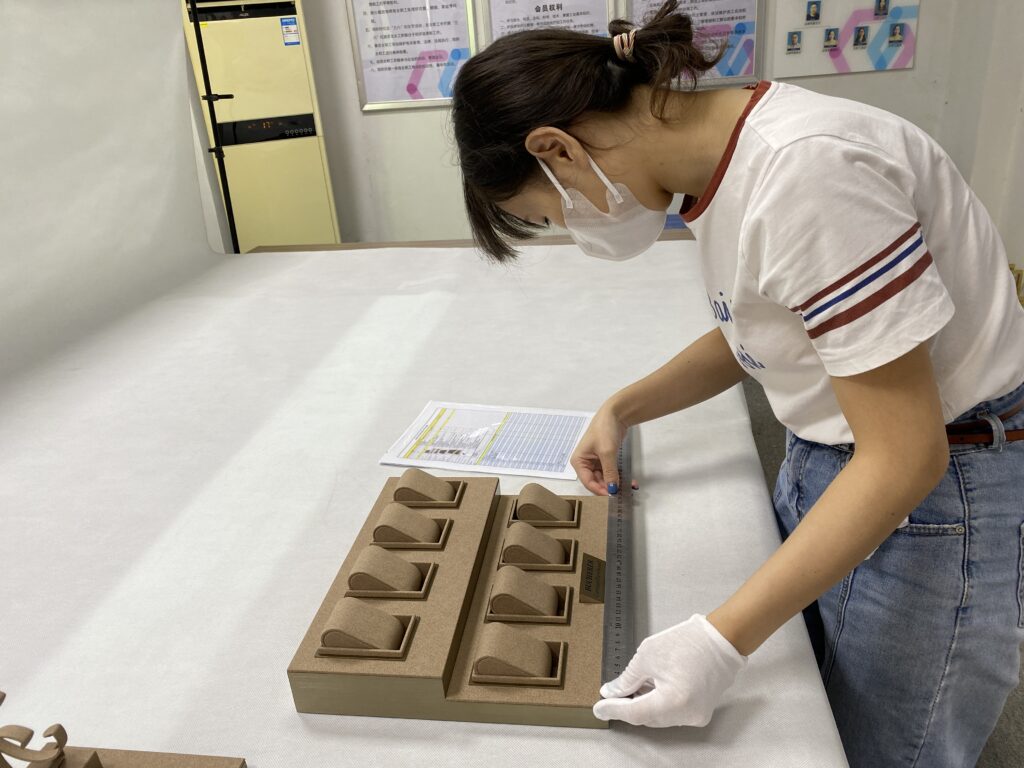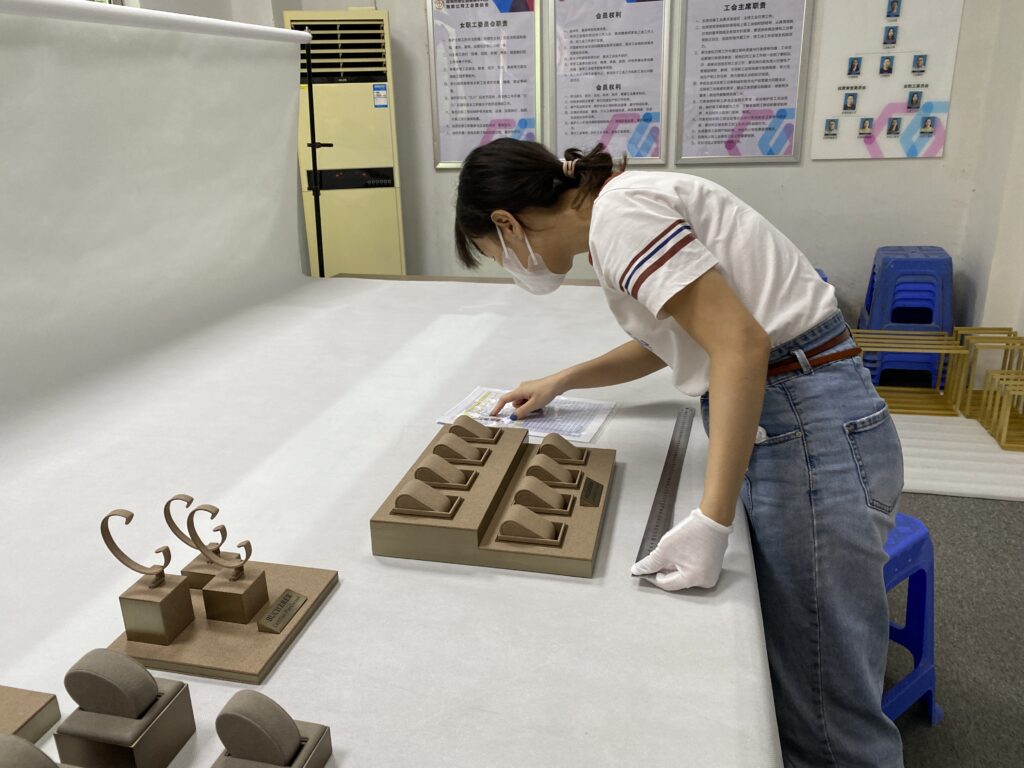How to Request an Inspection Report from Your Display Factory

A Step-by-Step Guide to Ensuring Quality and Compliance Before Shipment
By Yan Luo | Samtop Display
Table of Contents
Requesting a display factory inspection report is essential to ensure your units meet quality, compliance, and design requirements before shipment. . This involves setting inspection criteria, communicating effectively with the factory, selecting an inspection method, reviewing the inspection report, and following up on any issues to ensure that products are ready for shipment.
At Samtop, we guide brands through the inspection process, ensuring thorough reports and consistent quality control for every batch of display units produced.


1.Why You Need a Display Factory Inspection Report
Before committing to a shipment, it’s essential to ensure your display units meet your specific quality and design criteria. How can you be certain that the displays will meet your expectations when they arrive?
2.Risks of Skipping an Inspection Report
Without a clear, detailed inspection report, you risk receiving faulty or subpar products. This can lead to delays, reputational damage, and customer dissatisfaction. The stakes are high when it comes to product quality and compliance.
3. Step-by-Step Guide: Requesting a Display Factory Inspection Report
By following a structured process for requesting and reviewing an inspection report, you can eliminate uncertainties and ensure that your products meet your exact requirements. At Samtop, we make sure every display unit is inspected and approved before shipment.
📊 Key Steps for Requesting an Inspection Report
1.Defining Inspection Criteria for Display Quality Control
Clear inspection criteria are the foundation of a successful quality control process. Without well-defined standards, both you and the factory might be unsure about what is expected during the inspection.
Key Considerations:
- Quality Standards: Establish specific standards for materials, craftsmanship, durability, and finish.
- Design Specifications: Outline dimensions, colors, branding, and other custom features to be inspected.
- Regulatory Compliance: Verify that the displays meet all relevant certifications (e.g., CE, RoHS).
- Quantity and Batch Information: Specify which production batch the inspection will cover.
Tip:
Create a detailed checklist for the factory, ensuring all inspection areas are covered thoroughly.
2. Communicate with Your Factory
Once you’ve defined your criteria, the next step is to communicate them clearly to your factory. Proper communication ensures that the inspection will be conducted with the right expectations.
Steps for Effective Communication:
- Inform the Factory: Notify them about the inspection intention and specify which batch needs to be inspected.
- Set Expectations: Ensure they understand the quality standards, design specifications, and compliance requirements.
- Agree on Timing: Confirm a specific inspection date, allowing the factory enough time to address potential issues before shipment.
Tip:
Set a clear inspection date and provide ample time for the factory to make any necessary adjustments before shipment.
3. Choosing Between In-House and Third-Party Inspection Reports
You have the option of having the inspection conducted by the factory itself or hiring an independent third-party inspection service.
In-House Inspections:
- Pros: Faster and more cost-effective.
- Cons: Potential bias or lack of objectivity in the report.
Third-Party Inspections:
- Pros: Unbiased, detailed, and comprehensive inspection, often adhering to internationally recognized standards.
- Cons: Additional inspection fees, but worth the cost for high-value orders.
Tip:
For larger or high-value orders, consider a third-party inspection for added transparency and assurance.
4. How to Review a Display Factory Inspection Report
After the inspection, the factory or third-party inspector will send the inspection report, which includes crucial details about whether the product met the established criteria.
Key Information in the Report:
- Pass/Fail Status: Does the product meet the required standards?
- Detailed Observations: Specific defects, discrepancies, or issues found (e.g., size variations, color mismatches).
- Photographs and Samples: Clear images or samples showing the defects.
- Recommendations: Suggestions for corrective actions if necessary.
Tip:
Carefully compare the inspection results with your original criteria. If discrepancies arise, request clarification or further inspections before approving shipment.
5.Following Up on Inspection Issues with Your Factory
Once you’ve reviewed the inspection report, it’s time to engage with the factory. Discuss any issues and decide on the next steps.
Key Actions:
- Address Issues: Ask the factory for a corrective action plan if defects are found.
- Request Rework: If issues are minor, ask the factory to correct them and re-inspect the batch.
- Confirm the Plan: Once the issues are addressed, confirm the final quality and request a new inspection report if necessary.
Tip:
Be clear about your expectations and give the factory a chance to resolve the issues before proceeding with shipment.
6. Final Approval and Shipment After Inspection
Once the inspection report is finalized and all issues are resolved, you can give final approval for shipment.
Final Steps:
- Approve the Report: Once all issues are addressed, send formal approval for shipment.
- Review Shipping Details: Verify that the packaging and shipping arrangements meet your expectations to prevent damage during transport.
Tip:
Request a photograph of the final packaging to ensure that the units are securely packed and ready for shipment.
💬 FAQ: Display Factory Inspection Reports
Q1: What should be included in a display factory inspection report?
✅ The report should include pass/fail status, detailed observations of defects, photos, and recommendations for corrective actions.
Q2: How do I choose between in-house and third-party inspection?
✅ For high-value orders, third-party inspections provide an objective, detailed review. In-house inspections work for smaller or less critical orders.
Q3: How do I handle defects identified in the inspection report?
✅ Discuss the defects with the factory and request a corrective action plan. You can either request rework or reject the defective batch.
Q4: Can I request a re-inspection if I am not satisfied with the initial report?
✅ Yes, you can always request a re-inspection if the initial inspection report doesn’t meet your standards or if you feel the issues were not adequately addressed.
✅ Conclusion: Ensuring Quality with Inspection Reports
✔️ Define your inspection criteria to align expectations with the factory.
✔️ Choose between in-house or third-party inspections based on your needs.
✔️ Review the inspection report thoroughly to ensure product quality.
✔️ Follow up with the factory to address any issues before shipment.
A display factory inspection report ensures your products meet standards, reduce risks, and guarantee quality before shipment. SGS Inspection Services
📩 Need Help Requesting an Inspection Report from Your Display Factory?
At Samtop, we:
- Facilitate quality control inspections and provide inspection reports.
- Manage corrective actions and re-inspection processes.
- Ensure consistent product quality before shipment.
📧 Email: yan@samtop.com
🌍 Website: www.samtop.com